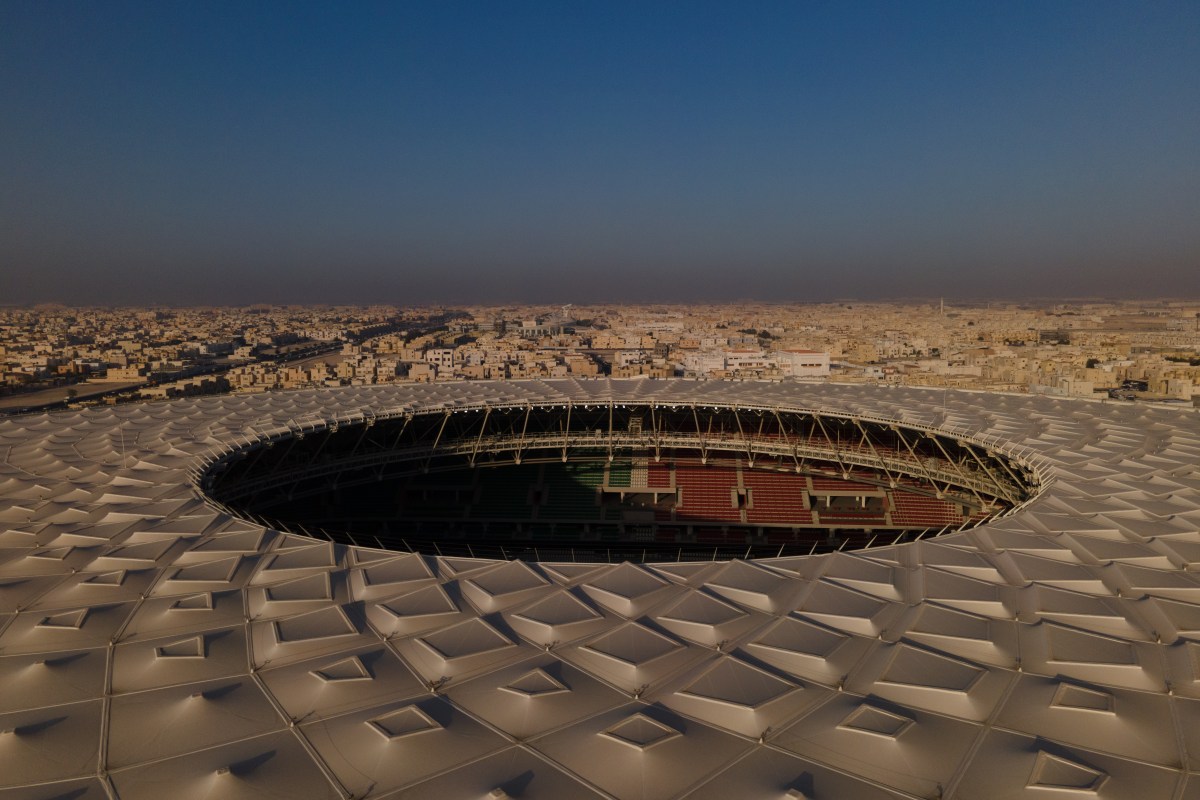The largest stadium by capacity in Connecticut is the Yale Bowl in New Haven. It holds a little over 60,000 spectators, but is a pretty bare-bones venue, considering it was built way back in 1914. It looks exactly like the Rose Bowl, and actually inspired Pasadena’s iconic arena.
Why should you care? Well, imagine if the Yale Bowl wasn’t just rows of concrete benches with a couple concession kiosks, but was instead a state-of-the-art stadium with a retractable roof designed by Zaha Hadid, 100-foot jumbotrons and miles of parking spaces. That’d be a pretty big deal for the Nutmeg State, no? Now imagine that there were seven additional stadiums that fit that description, of equal grandeur, somehow squeezed into Connecticut’s mere 5,500 square miles.
That’s an imperfect, but obviously pretty evocative example of what’s going on in Qatar, the World Cup host nation that is roughly the same size as America’s third-smallest state. For years now, the international focus on Qatar’s glittering soccer stadiums has revolved around the deaths of the migrant workers who built them. It’s a worthy and important conversation, and one that Qatar clearly doesn’t want the world to be having.
But as the tournament heads into its final weekend, perhaps it’s time to ask: what does the future hold for these stadiums? Will they join the long list of sporting infrastructure that went to waste the second the athletes skipped town? It’s easy to find shocking photos of abandoned arenas online…which just a few years ago were proudly playing national anthems and hosting medal ceremonies.
Is It Time We Just Accepted Doping as Part of Sports?
“Harder, better, faster, stronger” has always been the goal. Is that so bad?Fortunately, Qatar appears to have plans for at least some of its brand new stadiums. According to Dezeen, the biggest of them, Lusail Stadium (dubbed “the golden vessel”) will be retrofitted into a “community space,” replete with schools, shops and even health clinics. Meanwhile, the second-largest venue, Al Bayt Stadium, will be transformed into a luxury hotel. The materials used to construct roof — which gives the appearance of tents rising out of the desert — will be repurposed to build stadiums in other countries.
In many of the arenas, though, Qatar apparently plans to keep the venue’s sole purpose, while replacing some of the spectating capacity for functional additions, like classrooms, conference spaces or boutique hotels. (Think Rogers Centre in Toronto.) In at least one situation (Al Janoub Stadium), a local football franchise will assume operations of the venue. (Similar to West Ham United moving into London Stadium after the 2012 Olympics.)
Is there any guarantee that Qatar will honor its stated blueprints for these sites? Of course not. But keep in mind, Doha is hosting the 2030 Asian Games, and the country has aspirations for the 2036 Olympics, however infinitesimal a chance it may have. (Especially after all the World Cup controversy.) Qatar has every incentive to keep its venues in good shape, and build them out for more entertainment-seeking visitors. It’s following a similar model to Riyadh, in Saudi Arabia, which has built out an entertainment industrial complex around a slew of “crown jewel” stadiums.
We’ll have a good idea of what’s become of Qatar’s venues by the time the next World Cup rolls around in 2026. Taking place on North American soil, all 16 of that tournament’s stadiums, thank goodness, have already been built. And they can be found throughout the United States, Canada and Mexico…not just along I-95 in Connecticut.
Whether you’re looking to get into shape, or just get out of a funk, The Charge has got you covered. Sign up for our new wellness newsletter today.


















